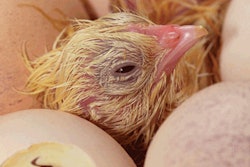Going to see the Environmental Protection Agency's (EPA) Office of Enforcement and Compliance Assistance (OECA) EPA's policemen - is about as much fun as a visit to the dentist. Don't get me wrong, OECA staff is thoroughly professional, but such a visit usually reveals they have a very different view of a matter than you do. And time has taught me that even if, in the end, you are able to prove your view is legitimate, it's still very costly financially, consumes vast quantities of time and brings more than a little stress.
But duty calls, so with Dr. Al Yancy of U.S. Poultry & Egg Association staff and Christian Richter of The Policy Group at my side, we paid a visit to the OECA's District of Columbia office in June to discuss the agency's recent inspections of poultry farms.
Documentation Please!
Topic 1 was biosecurity during farm visits. To be clear, EPA already had a well thought out biosecurity protocol, adopted in 2001. Our suggestions were more intended to tweak and more importantly, appropriately document the existing protocol. I sensed OECA was initially skeptical about our raising biosecurity as an issue, perhaps fearing we were trying to use the issue as a roadblock to their work. Further, some of the OECA staff wondered aloud why growers didn't insist that all visitors not just EPA follow the biosecurity provisions set by their integrators. EPA agreed to review and edit an inspection biosecurity checklist Dr. Yancy and I developed, and to consider inclusion of formal biosecurity documentation. From my view, OECA demonstrated a positive, appropriate response, and one that could protect both the industry and EPA down the road.
Uncovered Litter Draws Inspections
Topic 2: We asked the OECA representatives if there were particular practices at poultry farms that gave them concern, motivating recent inspections. The answer was swift and clear: uncovered stockpiles of litter.
It's difficult, in fact, to find anyone who is "in favor" of uncovered litter stockpiles. Even if one could prove there was not any release of pollutants from an uncovered stockpile, the fact remains that the practice of storing litter outside, uncovered, just plain looks bad. In many areas of the country, the practice is simply not allowed litter that does not go directly to the field, or covered storage, is tarped over to prevent runoff from occurring. Some states do allow the practice of uncovered stockpiles, intending it to be a temporary accommodation for scheduling litter application with row crop planting. But, even in these areas, though an allowed, it is not favored.
Although the EPA representatives did not explicitly say so, it's pretty clear that if a producer has uncovered stockpiles of litter, EPA believes that producer has, or will have, a discharge, and therefore is subject to enforcement action for having a discharge without a permit. Ultimately, any producer, if he survives the financial hit of an enforcement action, will have to apply for and obtain an NPDES permit.
Risks & Consequences
We in the industry have a choice. In my view this is not a fight we need to fight, nor is it a fight we are likely to win. And in those few instances where a producer does win a specific case, he still loses, and the industry still loses in terms of public image.
Instead, let's abandon this uncovered litter stockpile practice. Most poultry producing regions already have abandoned the practice, but in those states where it is allowed, let us simply abandon it. As integrators and trade organizations, let us reiterate our view on this practice and discourage outside litter storage, plan clean-out frequencies with an eye to minimizing storage needs, and work to secure Environmental Quality Incentives Program (EQIP) funding for growers who need litter sheds.
As growers, let us recognize the risk and consequences of outside litter storage. It's not about what is "legal" and "not legal." It's not about whether someone can prove or disprove uncovered litter piles have a significant environmental impact. Rather, it's about our image; it's about how our communities perceive us; it's about how much ammunition we want to feed the critics of our industry. Seems to me it's worth the cost of a little time, a couple sheets of 6 mil poly and some used tires to weight it down. It's certainly no worse than a trip to the dentist, and a whole lot better than an actual enforcement case with OECA.


















